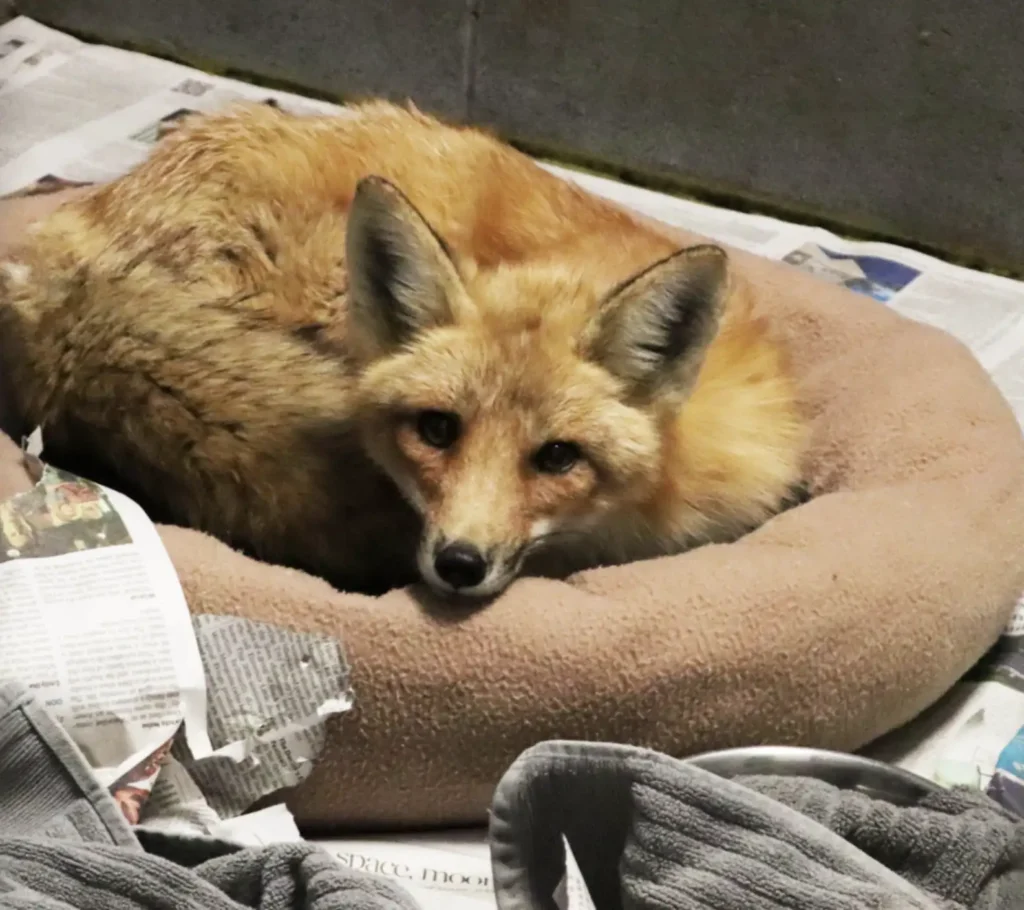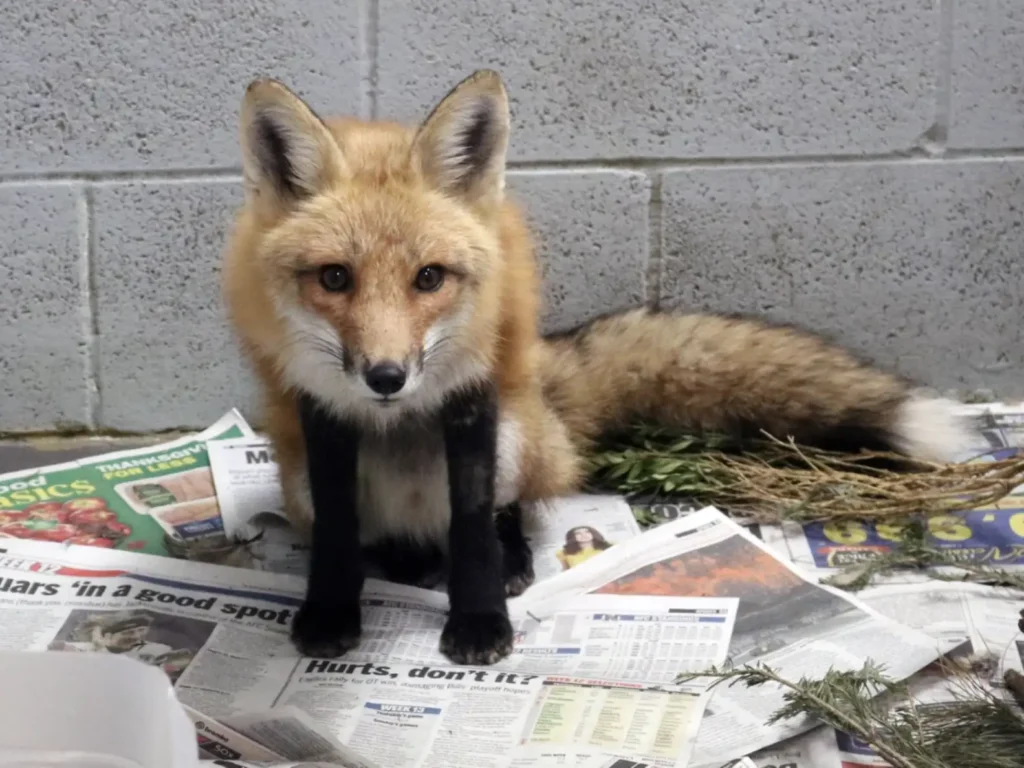“I’ve been doing wildlife rescue for almost 11 years … I’ve only seen a fox play dead once before” 😳
A recent incident in Toronto left a woman named Andrea puzzled as she spotted a red fox stumbling off the side of the road. Concerned for the fox’s well-being, Andrea promptly contacted the Toronto Wildlife Centre (TWC) hotline for assistance.
Upon arrival, TWC rescuers were met with an unusual sight. The fox displayed peculiar behavior, readily allowing itself to be captured and promptly fainting afterward.

“I’ve been doing wildlife rescue for almost 11 years,” the rescuer remarked in a press release. “I’ve only seen a fox play dead once before.”
The rescuer wasted no time in rushing the fox to a wildlife hospital. Veterinarians worked tirelessly to rehydrate the fox and make him more comfortable. However, as the days passed, rescuers realized the fox’s condition wasn’t improving. They needed to explore other options.
Suspecting rodenticide poisoning, vets determined that the fox required a blood transfusion. While emergency blood banks had supplies of cat and dog blood, fox blood was not available. With time running out, the veterinary team made a bold decision to proceed with a transfusion using dog blood. Miraculously, it proved successful.
“By the end of the procedure, the fox already seemed a bit brighter,” TWC stated in a press release. “[B]y the next day he was more aware and responsive.”
While this particular fox received life-saving treatment, many other animals are not as fortunate. Rodenticide poisoning frequently affects wildlife further up the food chain, leading to illness and death due to unintended exposure. Biologists emphasize the importance of adopting more sustainable pest control practices to mitigate such risks.

“The truth is, the only reason people have been using poisons for a long time is that it’s quick, easy, and cheap,” explained Seth Riley, a biologist for the National Park Service. “There are a ton of ways to solve pest problems without using poison — and various folks have been working hard on every level to ask people to stop using them and for stores to stop selling them. As long as these animals continue to be exposed, it will clearly continue to be an issue.”
Thanks to the quick thinking of the veterinary team, the fox is now stable and eating well. With a full 30-day treatment plan ahead, he’s on track to be released back into the wild to resume his life outdoors.
